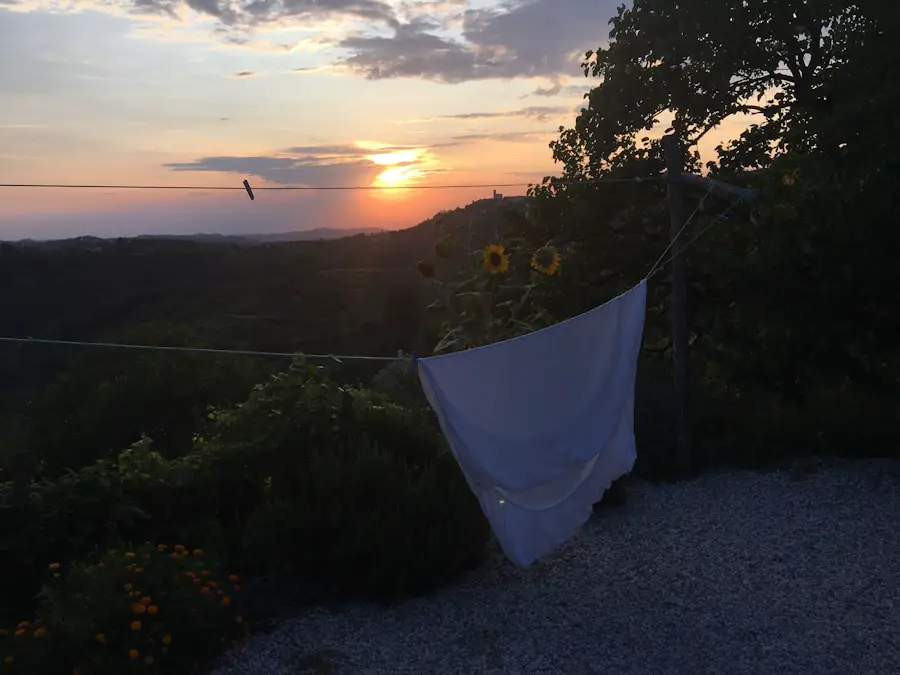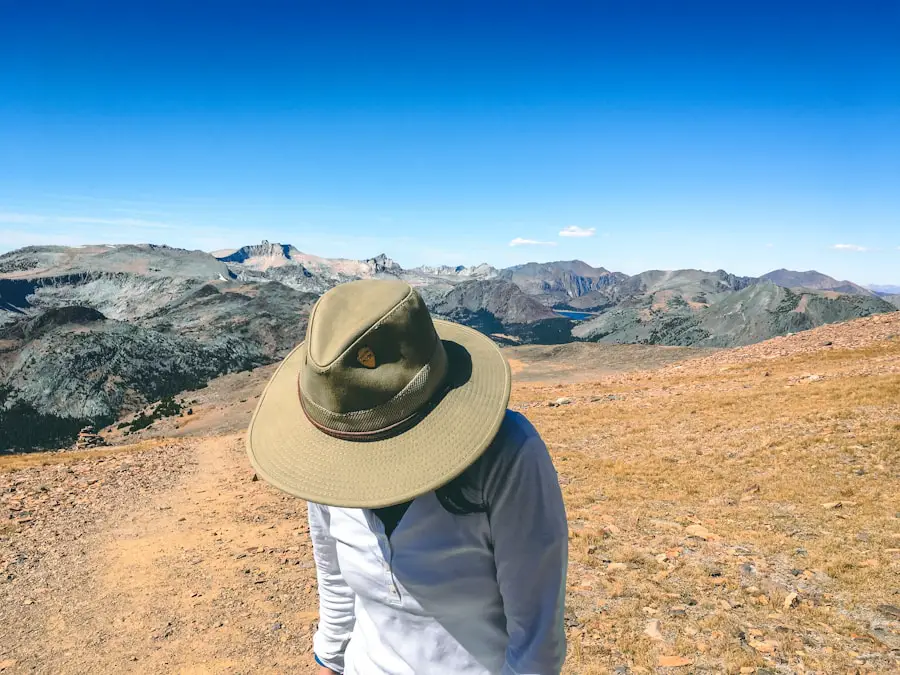Linen fabric, derived from the fibers of the flax plant, has been utilized for thousands of years, making it one of the oldest textiles known to humanity. Its history can be traced back to ancient civilizations, where it was prized not only for its durability but also for its breathability and natural luster. The process of transforming flax into linen is labor-intensive, involving harvesting, retting, and spinning, which contributes to its unique texture and strength.
Linen is characterized by its crisp feel and distinctive slubs, which are irregularities in the weave that add character to the fabric. This natural fiber is biodegradable and has a lower environmental impact compared to synthetic alternatives, making it a popular choice among eco-conscious consumers. In recent years, linen has gained renewed attention in the fashion and outdoor industries due to its sustainable properties and comfort.
As more people seek out materials that are both functional and environmentally friendly, linen has emerged as a viable option for various activities, including hiking.
Its unique characteristics make it an intriguing choice for outdoor enthusiasts who prioritize both performance and style. Understanding the properties of linen fabric is essential for those considering it for hiking apparel, as it can significantly influence comfort and functionality on the trail.Key Takeaways
- Linen is a natural fabric made from the flax plant, known for its durability, breathability, and moisture-wicking properties.
- Benefits of linen for hiking include its ability to keep the body cool, its resistance to bacteria and odor, and its durability for long-lasting wear.
- Drawbacks of linen for hiking include its tendency to wrinkle easily, its slower drying time compared to synthetic fabrics, and its potential for limited color and style options.
- When choosing the right linen clothing for hiking, look for lightweight and breathable options, consider the fit and style for comfort, and prioritize moisture-wicking properties.
- Tips for hiking in linen clothing include layering for temperature control, packing a small steamer or wrinkle-release spray, and choosing light colors to reflect sunlight and stay cool.
Benefits of Linen for Hiking
One of the most significant advantages of linen fabric is its exceptional breathability. When hiking, especially in warm weather, maintaining a comfortable body temperature is crucial. Linen’s natural fibers allow air to circulate freely, helping to wick moisture away from the skin.
This moisture-wicking property is particularly beneficial during strenuous activities, as it helps prevent overheating and keeps the wearer feeling fresh. Unlike synthetic fabrics that can trap heat and moisture, linen’s structure promotes evaporation, making it an ideal choice for those long hikes under the sun. In addition to breathability, linen is known for its durability.
The fibers are strong and resistant to wear and tear, which is essential when navigating rugged terrains. Unlike cotton, which can lose its shape and strength when wet, linen retains its integrity even in damp conditions. This resilience means that linen clothing can withstand the rigors of hiking without succumbing to damage easily.
Furthermore, linen’s natural resistance to mold and mildew adds another layer of protection for hikers who may encounter wet environments or humid conditions.
Drawbacks of Linen for Hiking

Despite its many benefits, linen does have some drawbacks that hikers should consider before choosing it as their go-to fabric. One notable issue is its tendency to wrinkle easily. While some may appreciate the relaxed look of wrinkled linen, others may find it unappealing, especially when engaging in outdoor activities where appearance might matter.
The wrinkles can also affect the fit of the clothing, potentially leading to discomfort during movement. For those who prefer a more polished look or require clothing that maintains a crisp appearance throughout their hike, this characteristic may be a significant drawback. Another consideration is that linen can be less effective in colder weather conditions compared to other fabrics.
While it excels in hot climates due to its breathability, it does not provide much insulation. Hikers venturing into cooler environments may find that linen clothing does not offer adequate warmth when temperatures drop. Additionally, linen’s moisture-wicking properties are not as pronounced in colder conditions, which could lead to discomfort if the fabric becomes damp from sweat or rain.
Therefore, while linen is excellent for warm-weather hiking, it may not be the best choice for all-season outdoor activities.
How to Choose the Right Linen Clothing for Hiking
| Factors to Consider | Importance | Consideration |
|---|---|---|
| Material | High | Choose linen fabric for breathability and moisture-wicking properties |
| Fit | Medium | Opt for a relaxed fit for comfort and ease of movement |
| Durability | High | Look for reinforced stitching and quality construction |
| UV Protection | Medium | Consider clothing with UPF protection for sun exposure |
| Quick Drying | High | Choose linen clothing that dries quickly to keep you comfortable |
When selecting linen clothing for hiking, several factors should be taken into account to ensure optimal performance and comfort on the trail. First and foremost, consider the weight of the fabric. Lightweight linen is preferable for hiking as it allows for better mobility and reduces bulk in your pack.
Look for garments labeled as “lightweight” or “summer weight,” which are specifically designed for warm-weather activities. Additionally, consider the weave of the fabric; a looser weave will enhance breathability but may sacrifice some durability. Fit is another critical aspect when choosing linen clothing for hiking.
Opt for garments that allow for a full range of motion without being overly baggy or restrictive. A well-fitted shirt or pair of pants will help prevent chafing during long hikes while still providing comfort and ease of movement. Many outdoor brands now offer linen blends that incorporate other materials like cotton or synthetic fibers to enhance performance characteristics while retaining the benefits of linen.
These blends can provide added stretch or moisture-wicking properties that make them even more suitable for hiking.
Tips for Hiking in Linen Clothing
To maximize comfort while hiking in linen clothing, there are several practical tips to keep in mind. First, layering is essential when wearing linen in varying weather conditions. Since linen does not provide much insulation on its own, consider pairing it with a lightweight base layer or a breathable jacket that can be easily removed as temperatures rise during your hike.
This approach allows you to adapt to changing conditions without sacrificing comfort. Another important tip is to pay attention to sun protection when wearing linen clothing. While linen naturally offers some UV resistance due to its dense weave, it is still advisable to apply sunscreen on exposed skin areas.
Additionally, consider wearing a wide-brimmed hat or using a UV-blocking scarf to protect your face and neck from sun exposure during long hikes. Staying hydrated is also crucial; ensure you carry enough water to keep your body cool and prevent overheating while enjoying the benefits of your breathable linen attire.
Care and Maintenance of Linen Clothing

Proper care and maintenance are vital for preserving the quality and longevity of linen clothing. One of the most important aspects of caring for linen is washing it correctly. It is generally recommended to wash linen garments in cold water on a gentle cycle to prevent shrinkage and maintain their shape.
Avoid using bleach or harsh detergents that can damage the fibers; instead, opt for mild soap or detergent specifically designed for delicate fabrics. Drying linen requires special attention as well; air drying is often the best method to prevent excessive wrinkling and maintain the fabric’s integrity. If you choose to use a dryer, select a low heat setting and remove the garments while they are still slightly damp to minimize wrinkles.
Ironing may be necessary to achieve a crisp look; however, it’s advisable to use a steam iron on a low setting while the fabric is still slightly damp for best results. Regularly checking for stains and treating them promptly will also help maintain the appearance of your linen clothing over time.
Alternative Fabrics for Hiking
While linen offers unique benefits for hiking, there are several alternative fabrics that outdoor enthusiasts might consider based on their specific needs and preferences. One popular option is merino wool, known for its excellent moisture-wicking properties and natural temperature regulation capabilities. Merino wool can keep you warm in cooler temperatures while remaining breathable during warmer conditions, making it versatile for various climates.
Another alternative is synthetic fabrics such as polyester or nylon blends designed specifically for outdoor activities. These materials often feature advanced moisture-wicking technologies that help keep sweat away from the skin while providing quick-drying capabilities—ideal for hikers who may encounter unexpected rain or sweat profusely during strenuous climbs. Additionally, many synthetic fabrics are treated with antimicrobial properties to reduce odor buildup during extended wear.
Is Linen Good for Hiking?
In summary, while linen fabric presents several advantages such as breathability and durability that make it appealing for hiking apparel, it also has limitations that should be carefully considered based on individual hiking conditions and preferences. Its lightweight nature makes it suitable for warm-weather hikes where ventilation is crucial; however, its tendency to wrinkle and lack of insulation may deter some hikers from choosing it as their primary fabric. Ultimately, whether linen is good for hiking depends on personal preferences regarding comfort, style, and environmental considerations.
For those who appreciate natural fibers and prioritize sustainability in their outdoor gear choices, linen can be an excellent option when paired with appropriate layering techniques and care practices. As with any fabric choice for hiking, understanding your specific needs will guide you toward making an informed decision that enhances your outdoor experience.
If you’re considering wearing linen for your next hiking trip, you may want to check out this article on the best time to travel to Bermuda. It offers insights on the ideal seasons to visit this beautiful destination, which can help you plan your hiking adventure accordingly.
FAQs
What is linen?
Linen is a natural fiber made from the flax plant. It is known for its durability, breathability, and moisture-wicking properties.
Is linen a good choice for hiking?
Yes, linen can be a good choice for hiking due to its breathability and moisture-wicking properties. It helps to keep the body cool and dry during physical activity.
Does linen have any drawbacks for hiking?
While linen is breathable and moisture-wicking, it may not be as quick-drying as synthetic materials. It also has a tendency to wrinkle easily.
How does linen compare to other fabrics for hiking?
Linen is often compared to cotton and synthetic materials for hiking. It is more breathable than cotton and has natural moisture-wicking properties, but may not dry as quickly as synthetic materials.
What should I look for in linen hiking clothing?
When choosing linen clothing for hiking, look for lightweight and breathable options. Consider blends with other materials to improve durability and reduce wrinkling. Additionally, look for clothing with UPF protection for sun exposure.
